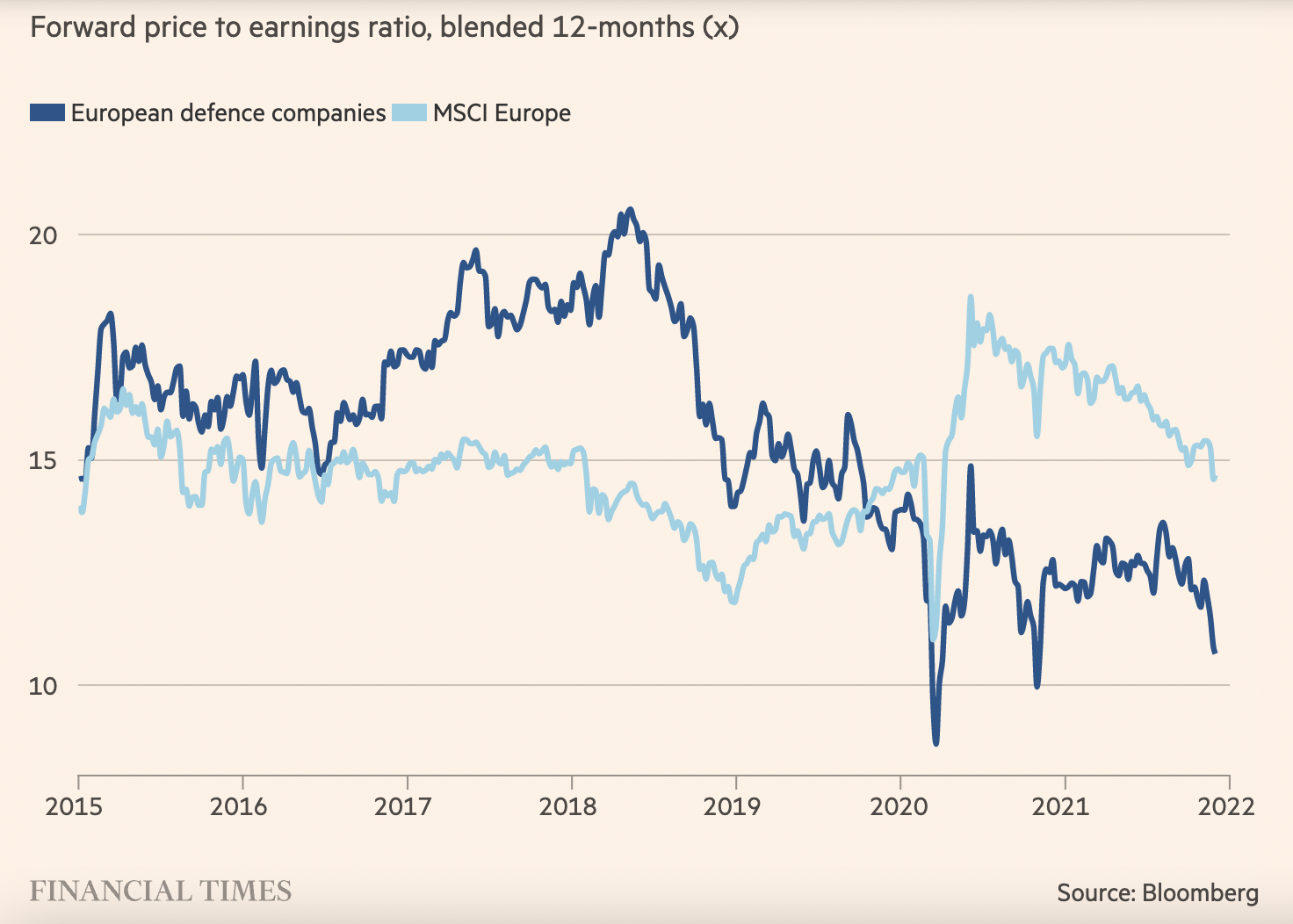|
\\ Weekly Insights \\
I read two pieces recently that made me want to touch on industry wide exclusion as this week’s core topic.
-
Perspectives from European defense executives on the damage of exclusion to their industry
-
An interview with BP’s new CEO on the company goals to go green.
The first, is a Financial Times piece discussing the growing pressure of defense companies. First of all, the article points out that for a long time the defense companies had been targeted by anti war demonstrators at shareholder meetings and trade fairs. However, with the rise of ESG they are now being targeted by socially conscious investors more than ever before. Already investors are moving away from defense stock’s as can be seen in the chart below:

One specific quote from the article is by the Head of Investor Relations at Thales, Bertrand Delcaire:
“As the designer of many innovative solutions for a greener, safer and more inclusive world, we do not understand how cyber security, in which we are a tier-one player, can be seen as a positive ESG activity while other elements of our product portfolio such as radars, sonars and military communication systems that contribute to physical security are seen as a negative ESG activity.”
Could it be a problem of definitions? This is the concern of the chief executive at BAE: [Defense] is “suffering from a lack of consensus in defining ESG compliance, which is causing some investment funds to exclude all defence stocks, rather than taking a more considered approach to assess individual company strategies and portfolios”.
How much are companies impacted by “Negative screening?” A huge % in Europe!

The next article on this is one by Time Magazine where BP’s new CEO, Bernard Looney, discusses his determination to remake BP entirely. Similar to defense, oil giant’s are deeply targeted by activists and when you think of “What is not an ESG” company, for many, BP would be top of the list. However, the company wants to change it’s image with Looney announcing the company would cut its oil and gas production by 40% by the end of this decade, plow billions into solar, wind and other renewables, and roll out electric-vehicle charging points at its convenience stations worldwide. By 2050, he says, BP will zero out its polluting carbon emissions—a whopping 415 million metric tons a year in 2019.
What is he saying about the matter:
“We must change. We have to lean into the transition. We must give society what it wants and needs, and that is clean, reliable, affordable energy, and to do that, we have to change.”
What about the skeptics?
“[Many] see us as part of the problem, not part of the solution. I believe that we are and will be and need to be part of the solution. I would go further and say that if BP doesn’t transition, the world won’t transition.
Energy is where the emissions are. Tesla sells close to a million cars a year today. The world needs 70 million cars a year. Toyota, Volkswagen, Renault-Nissan: They make 30 million cars a year. When they go electric, the world goes electric. When companies and sectors like BP start to transition, the world will transition.”
I generally fall somewhere in the middle where I don’t think full exclusion is a way we can make change because that isn’t making the world’s “worst” ESG companies improve. However, letting companies get away without showing true improvement over time I also don’t believe can move things in the right direction. I think as ESG industry professionals, we need to educate the wider market on differences between exclusionary investment versus investing in improvers. I also prefer an “improvers” rhetoric because it promotes progress on key E, S and G topics and conversation while exclusion removes ourselves as advocates on ESG from the conversation.
|